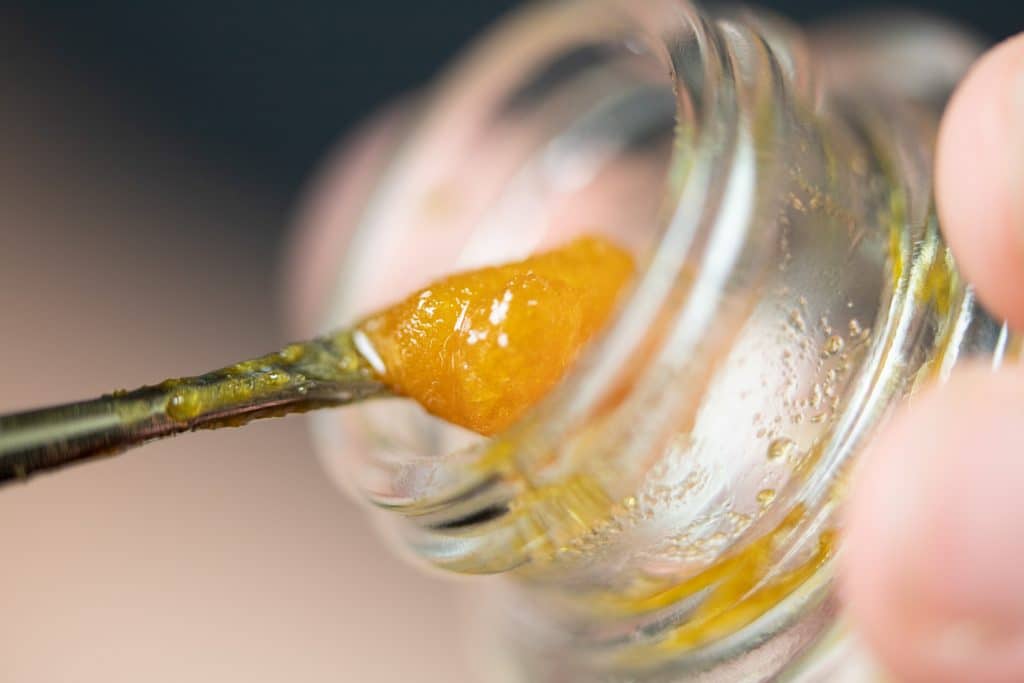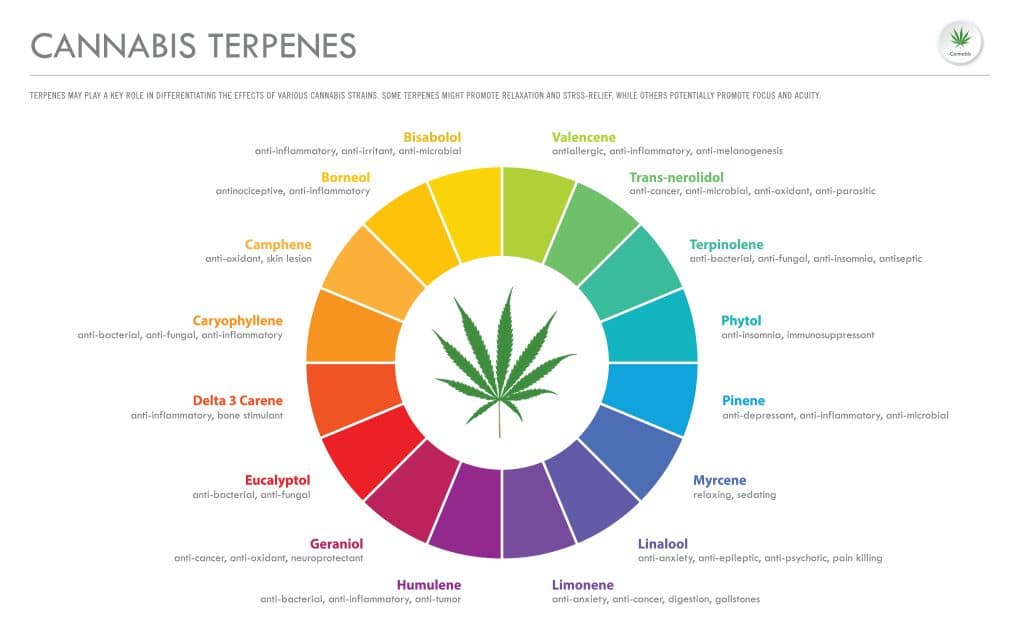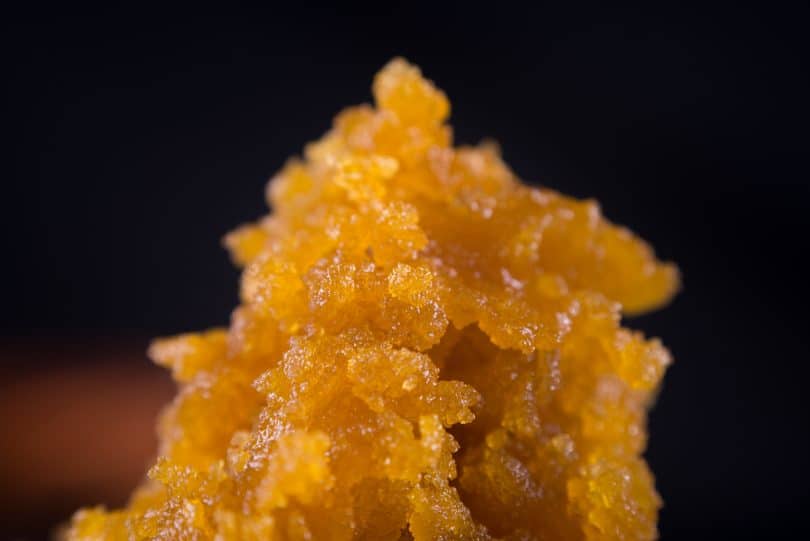When it comes to cannabis concentrates, stronger is not necessarily always better. Sure, you want your products to have the highest level of THC possible, but what truly makes a great concentrate would have to be terpene profiles. Not only do terps give cannabis products their distinctive aromas and flavors, but they also make a considerable difference in the type of high a person will experience. When creating concentrates, one of the primary objectives is to preserve as many of the natural plant compounds as possible, but do so in a way that is also cost effective for producers. Enter: Oleoresin.
To stay current on everything important happening in the cannabis and psychedelics industries, subscribe to The Cannadelics Weekly Newsletter. Also, it’ll get you premium access to deals on cannabis flowers, vapes, edibles, and much more! We’ve also got standout offers on cannabinoids, like HHC-O, Delta 8, Delta 9 THC, Delta-10 THC, THCO, THCV, THCP & HHC, which won’t kill your bank account. Head over to our “Best-of” lists to get these deals, and remember to enjoy responsibly!
Cannabis Extracts and Concentrates Explained
When it comes to the higher potency cannabis products, there are two terms you’re likely to hear: extracts and concentrates. They’re often used interchangeably, and while this usually makes sense, it doesn’t always because the definitions do differ slightly.
“Extract” refers to anything pulled from cannabis flower. When you put raw plant matter into certain solvents like oil, ethanol, or water (alcohol is most common), you can draw out various compounds including THC, CBD, and various terpenes. The final solution you’re left with, is known as cannabis extract.
The word “concentrate” is somewhat self-explanatory – it’s a concentrated form of something extracted from another product. Cannabis concentrates come in many different forms. Some concentrates, like the sauces and badders, are waxy and not easily handled so they’re typically only used with some type of dab rig, nectar collector, or similar. With the more solid concentrates, you can dab them if you’d like but you can also put them on top of flower in your bowls, joints, and blunts, to make them burn slower, as well as boost the flavor and efficiency. Concentrates can be vaped as well.
So, all concentrates are extracts, but not all extracts are concentrates. To elaborate on that a little further, let’s take a closer look at how a basic extraction works. Take a strain that has 20% THC, for example. If you smoke the flower, you’ll get the effects of 20% THC; but if you extract the THC and isolate it from the rest of the plant matter, you’ll have a final product with well over 90% THC. With such high levels of THC, this extract would also be considered a concentrate.
If you do the same extraction focused on a minor cannabinoid, like CBN for instance, you’ll end up with a tincture, rather than a concentrate. This is because the percentage of CBN in most flower strains is very low – less than 1% – so the ratio of the CBN compared to other compounds in the plant will remain relatively the same once extracted. You can certainly make CBN concentrates if you want to, but that will require the extra step of separating it from the other compounds in the extraction.
What is Oleoresin?
Oleoresins are semi-solid extracts that are composed of plant resin and essential or fatty oils that are created when the extraction solvents are evaporated. Typical solvents used to create oleoresins include acetone, CO2, ethyl acetate, ethylene dichloride, methanol and methylene chloride, as well as application of heat and pressure.

In cannabis it’s considered a natural resin, and can be described as a sticky, semisolid mixture of all the very best compounds found in weed. In this industry, it’s a relatively new product, but oleoresins have been extracted from various spices for quite some time.
Oleoresins have some advantages over similar extraction processes. Less low taste notes are lost when oleoresins are extracted compared to essential oils that are steam distilled. Additionally, several significant flavor characteristics that are missing from volatile oils are present in the heavy oils of the oleoresins. Overall, some claim that oleoresin is basically a more flavorful form of live resin.
Live Resin VS. Oleoresin
Live resin is currently one of the most popular cannabis extracts on the market. The reason is simple: live resin tastes as close to real flower as you can get. It has a much more natural, weedy flavor than distillates, even those with terpenes added in later. Oleoresin is less known, but comparable to live resin in the sense that oleoresins preserve more of the natural plant compounds.
The main way in which they differ, is how they are extracted. Live resin is made from fresh, flash-frozen cannabis flowers that are put through a solvent extraction process; whereas oleoresin is made using a combination of solvent and heat/pressure for extraction. Both methods aim to retain the best terpene profiles possible. Live resin usually has slightly higher levels of THC, while oleoresin typically contains more terpenes. The process of making oleoresin is also less time-consuming than live resin.
So, let’s quickly summarize, since it can certainly get confusing trying to differentiate between all the different concentrates. Live resin comes from frozen flowers put through a solvent extraction, live rosin is a solventless extraction product using heat and pressure, and oleoresin requires both solvent and heat/pressure to extract.
A Bit More About Terpenes
The whole point of extracting cannabis this way is to get plant terpenes in the final product. Terpenes are a very large and diverse class of organic compounds that are produced by a wide variety of plants including herbs, trees, flowers, and fruit. In cannabis, they are secreted by the same glands that produce some of the most prominent cannabinoids including THC and CBD; but their role and effects are vastly different. Terpenes are aromatic plant oils that, when combined with other plant compounds, create a limitless palate of scents and flavors. In nature, terps serve as a defense mechanism by deterring herbivores who are turned away by the smells, and by attracting predators and parasites that attack herbivores.

Chemically, terpenes are hydrocarbons and they are the major component of rosin, a waxy type of sap that is produced and developed throughout the life cycle of the cannabis plant. There are curing processes that can improve the final quality and content of the terpenes, but other factors that impact their development are climate, weather, age and maturation, fertilizers, soil type, and light cycles.
As far as cannabis goes, terpenes – not classification (sativa/indica) – are the key to differentiating between effects and flavors of a strain. Some terpenes are relaxing, like those found in lavender, while others are energizing, like the terps abundant in citrus fruit. Some smell fruity, some are piney, and others are musky. The possible variations are endless. So far, over 100 different terpenes have been discovered in cannabis plants alone, and each strain typically has its own unique blend and composition.
Terpenes have long been known to hold great therapeutic value, and some of the more common ones – like limonene, pinene, and caryophyllene – have been studied more extensively since they’re found in many different types of legal plants. More research is needed to determine the extent of their medicinal effects when combined with other cannabis plant compounds.
Final Thoughts
Simply put, Oleoresin is a product that is new in the world of cannabis but not so new when it comes to general essential oils. Oleoresins are created by many plants and can be produced by doing a solvent extraction combined with heat and pressure. The point of Oleoresin is to offer a concentrate that retains the highest level of terpenes possible, and thus, will have some of the best flavors you can get on the market. There are very few cannabis oleoresin products for sale currently, but what is available you can find in our newsletter (sign up box at the top of the page).
Welcome all! We appreciate you stopping by Cannadelics.com (formerly known as CBDtesters.co ), an independent publication which offers up fully-rounded news from the cannabis and psychedelics industries. Drop by daily to stay informed on all relevant changes, and subscribe to The Cannadelics Weekly Newsletter, to keep on top of everything going on.









